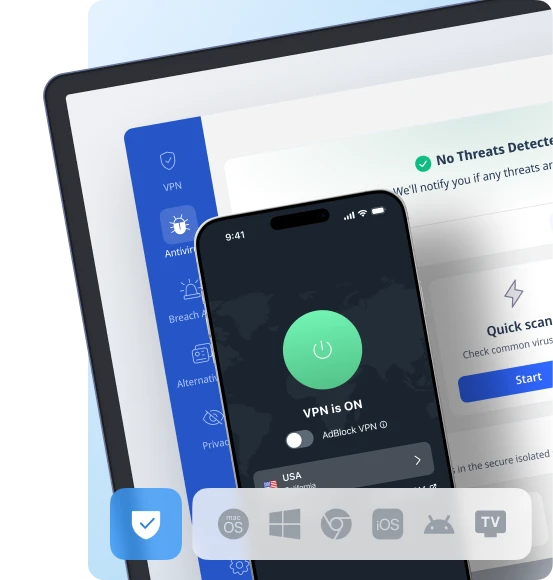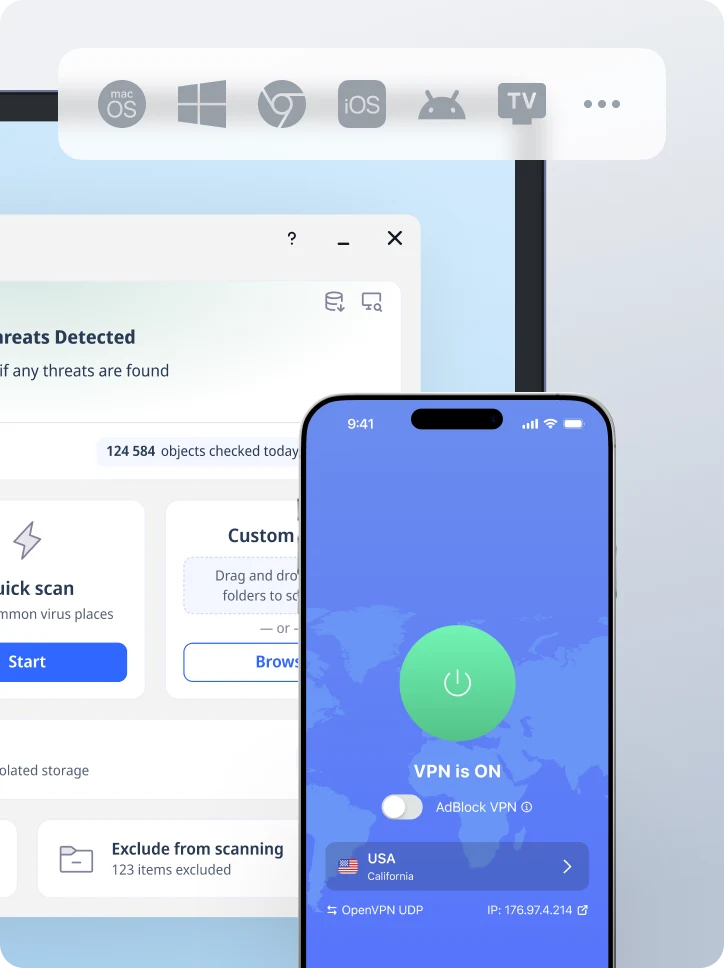Are Password Managers Safe? Here’s What Really Happens Inside That Vault
You open a new shopping site, the sign-up form blinks, and your brain draws a blank — do you reuse that weak password from 2014 or cook up something impossible to remember? That daily dilemma is why more people turn to a password manager.
But the question keeps buzzing: are password managers safe enough to trust with all your passwords and credit-card numbers? Let’s unpack how these tools work, the slips that make headlines, and the smart add-ons that make a good vault even tighter.

Protect more than passwords with VeePN
Before we go deeply into the password managers, we must say that a rock-solid vault is only half the job. The other half is guarding the route between you and that vault. That’s where VeePN truly helps:
- Encrypted tunnels everywhere. It wraps every packet in the most advanced encryption standard (AES-256). Even if attackers sit on café Wi-Fi, they see scrambled noise instead of your login information.
- NetGuard threat blocker. A built-in filter strips out fake “update your password manager” pop-ups, keeping most phishing attacks off your screen.
- Breach Alert radar. VeePN scans leak databases. If crooks dump your master email, you get a heads-up before they try password reuse on multiple sites.
- Kill Switch fail-safe. Should your VPN hiccup, Kill Switch drops the connection so no plain-text traffic slips out—ideal when you’re using a password manager on public networks.
- 10-device coverage. Shield laptops, phones, and tablets with one plan, so your mobile devices aren’t the forgotten weak link.
Now, let’s answer the main question:
Are password managers safe or just convenient?
Most security researchers agree: the top vaults use industry standard encryption, usually AES-256 with PBKDF2 key stretching plus a zero knowledge architecture. In plain words, only you know the master password that unlocks your encrypted vault. And providers can’t peek inside even if served a warrant.
Still, safety is a spectrum. Three pillars decide how password managers secure your secrets:
- Code design
- Cloud storage (do cloud based password managers isolate your data?)
- Human habits (do you dodge reused passwords and enable multi factor authentication?)
Let’s break each of them down.
Password manager basics: how they store passwords and lock them down
A vault file lives locally or in the cloud. It holds encrypted passwords, secure notes, and sometimes credit card details. Without the correct primary password, attackers can’t decrypt the blob. Many password managers add a secret key or device token, so a thief needs both the main password and that key to gain access.
Master password
It is both your key and Achilles heel. That one phrase governs all your online accounts. Pick a short, dictionary word and an attacker can brute-force billions of guesses a second.
Adding multi factor authentication (or 2FA)
With multi factor authentication (sometimes called two factor authentication) your login needs a second proof: a phone prompt, hardware key, or TOTP code. Even if a data breach leaks your primary password, crooks still can’t open the door. Most password managers support app-based codes or FIDO2 keys.
Browser password managers vs dedicated apps
Chrome or Safari’s built-in vaults are tempting: no extra install, free, and they automatically fill forms. Yet browser-based password managers live in a bigger attack surface (extensions, experimental flags). Dedicated tools isolate secrets in hardened modules and support secure sharing with family members across multiple devices.
How software bugs weaken even the best password managers
These are the famous cases of big password managers issues:
LastPass breach (December 2022 & October 2023)
Attackers infiltrated a DevOps server, copied customer vault backups, and later snatched a cloud-storage key. Anyone with a weak master password faced brute-force danger.
KeePass vulnerabilities (2023)
A vulnerability in KeePass 2.x allowed attackers to recover most of the master password from a memory dump, though a fix is coming in version 2.54.
1password WebSockets issue (January 2025)
1Password addressed a token re-use vulnerability that could allow unauthorized session hijacking on shared devices. The issue was patched within 48 hours of discovery.
Patch speed and full disclosure separate good password managers from the pack. Let’s see how to choose a decent password manager.
Choosing the right password manager
Finding “the one” isn’t about shiny dashboards. Gauge these factors:
- Strong encryption under the hood. Look for open audits, advanced encryption standard implementation, and public bug-bounty programs.
- Cross-platform sync. You want seamless use on web browsers, desktops, and mobile devices without juggling exports.
- Zero knowledge pledge. Verify that the provider cannot reset your master password or read vault content.
- Robust recovery options. Seed phrases or hardware keys prevent lockouts if you forget old passwords.
- Active development. Frequent updates squash software vulnerabilities before bad actors weaponize them.
Once you find the one you need, here are some recommendations for using it as safely as possible.
Best practices when using a password manager
A vault is a tool. These using habits can make it most effective for you:
- Generate complex passwords instead of inventing them. Hit the password generator and let randomness defeat guesswork. Dump weak passwords and assign 20-character mixes to every service.
- Rotate legacy logins. Track old passwords in the audit tab. Swap them for new strings so you never share the same password between multiple sites.
- Review password vault health reports. Different password managers flag reused or compromised entries. Set a monthly reminder to prune the list.
- Enable autofill wisely. The autofill function is handy, but disable it on financial pages if strangers use your laptop. One extra click beats losing money.
- Share secrets securely. Need to pass Netflix creds to family members? Use the platform’s encrypted channel, but never plain text.
Double-lock that vault with VeePN
As we mentioned in the beginning, even the toughest vault can’t block an ISP peeking at your traffic or a hotel router leaking DNS. So, VeePN wraps every sync in AES‑256 encryption, hides your real IP to foil spear‑phishers, seals off DNS and IPv6 leaks, and keeps speeds humming with 2 500+ servers worldwide, all while logging absolutely nothing.
Give VeePN a try without risks, as it backs every plan with a 30-day money-back guarantee.
FAQ
Yes. Attacks usually target human mistakes like a weak master password or exploit server misconfigurations. Enabling two factor authentication slashes that risk. Discover more useful tips and practices in this article.
Most do. They argue that storing strong passwords in an encrypted vault beats writing them on paper or reusing logins online. Experts still stress the need for MFA and regular updates. Discover more useful tips and practices in this article.
Some popular password managers such as Bitwarden and Dashlane have not reported breaches that exposed vault data. Still, the absence of a hack today doesn’t guarantee tomorrow, so pick one with independent audits. Discover useful tips and practices for using password managers safely in this article.
You rely on a single point of failure. If you lose your primary password, recovery can be really tough. Sync outages may lock you out across multiple devices, and a rare exploit could expose passwords stored if you ignore patches. Discover useful tips and practices for using password managers safely in this article.
VeePN is freedom
Download VeePN Client for All Platforms
Enjoy a smooth VPN experience anywhere, anytime. No matter the device you have — phone or laptop, tablet or router — VeePN’s next-gen data protection and ultra-fast speeds will cover all of them.
Download for PC Download for Mac IOS and Android App
IOS and Android App
Want secure browsing while reading this?
See the difference for yourself - Try VeePN PRO for 3-days for $1, no risk, no pressure.
Start My $1 TrialThen VeePN PRO 1-year plan








